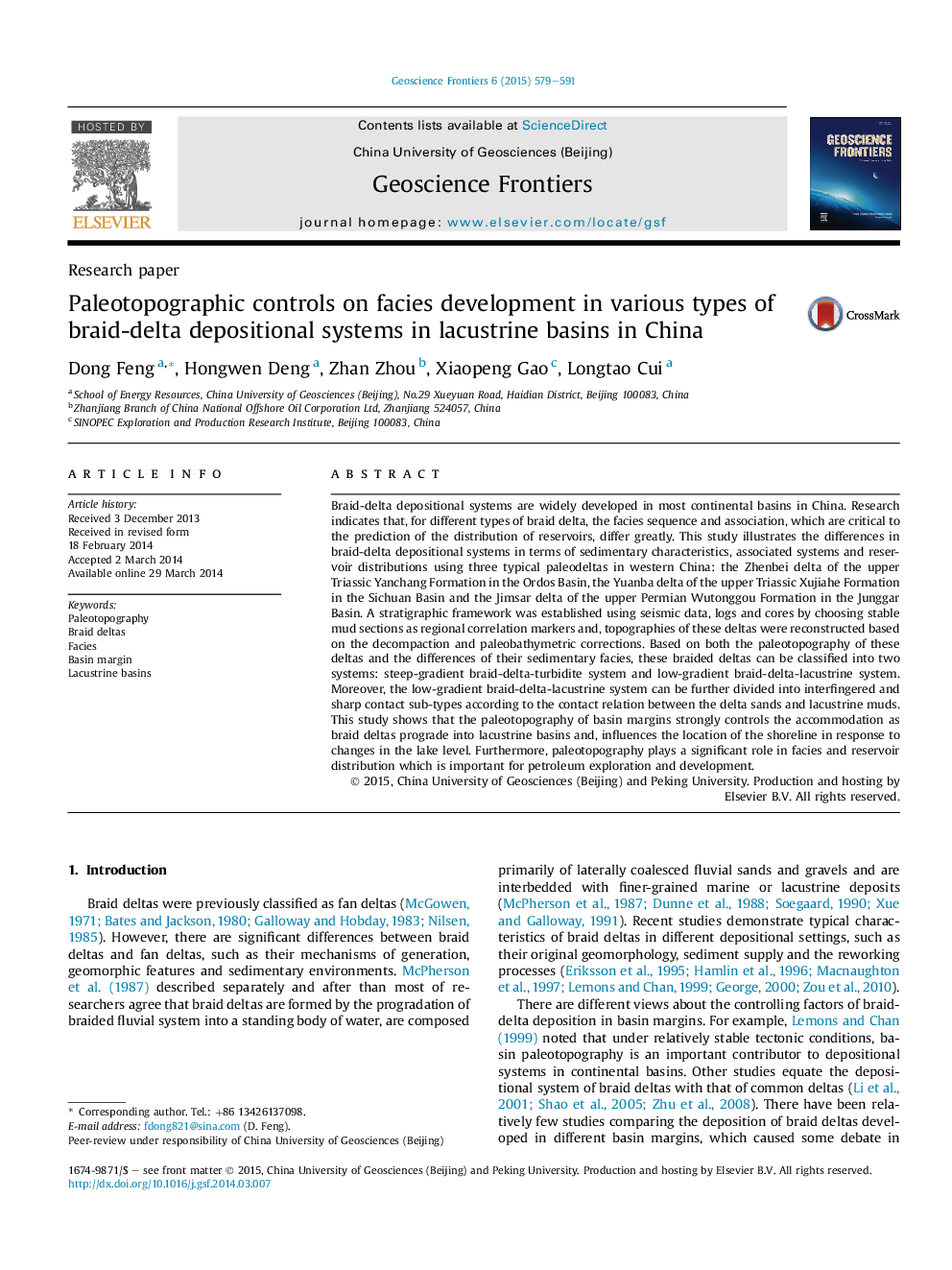| کد مقاله | کد نشریه | سال انتشار | مقاله انگلیسی | نسخه تمام متن |
|---|---|---|---|---|
| 4681608 | 1348861 | 2015 | 13 صفحه PDF | دانلود رایگان |
• The paleotopography of the ramps in three paleodeltas were reconstructed based on decompaction and paleobathymetric corrections.
• Braid-delta depositional systems in lacustrine basins can be divided into three different types.
• Paleotopography plays a significant role in the sedimentary facies and reservoir distributions.
Braid-delta depositional systems are widely developed in most continental basins in China. Research indicates that, for different types of braid delta, the facies sequence and association, which are critical to the prediction of the distribution of reservoirs, differ greatly. This study illustrates the differences in braid-delta depositional systems in terms of sedimentary characteristics, associated systems and reservoir distributions using three typical paleodeltas in western China: the Zhenbei delta of the upper Triassic Yanchang Formation in the Ordos Basin, the Yuanba delta of the upper Triassic Xujiahe Formation in the Sichuan Basin and the Jimsar delta of the upper Permian Wutonggou Formation in the Junggar Basin. A stratigraphic framework was established using seismic data, logs and cores by choosing stable mud sections as regional correlation markers and, topographies of these deltas were reconstructed based on the decompaction and paleobathymetric corrections. Based on both the paleotopography of these deltas and the differences of their sedimentary facies, these braided deltas can be classified into two systems: steep-gradient braid-delta-turbidite system and low-gradient braid-delta-lacustrine system. Moreover, the low-gradient braid-delta-lacustrine system can be further divided into interfingered and sharp contact sub-types according to the contact relation between the delta sands and lacustrine muds. This study shows that the paleotopography of basin margins strongly controls the accommodation as braid deltas prograde into lacustrine basins and, influences the location of the shoreline in response to changes in the lake level. Furthermore, paleotopography plays a significant role in facies and reservoir distribution which is important for petroleum exploration and development.
Figure optionsDownload as PowerPoint slide
Journal: Geoscience Frontiers - Volume 6, Issue 4, July 2015, Pages 579–591
